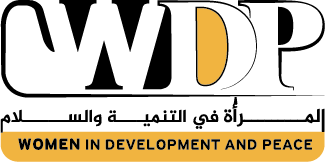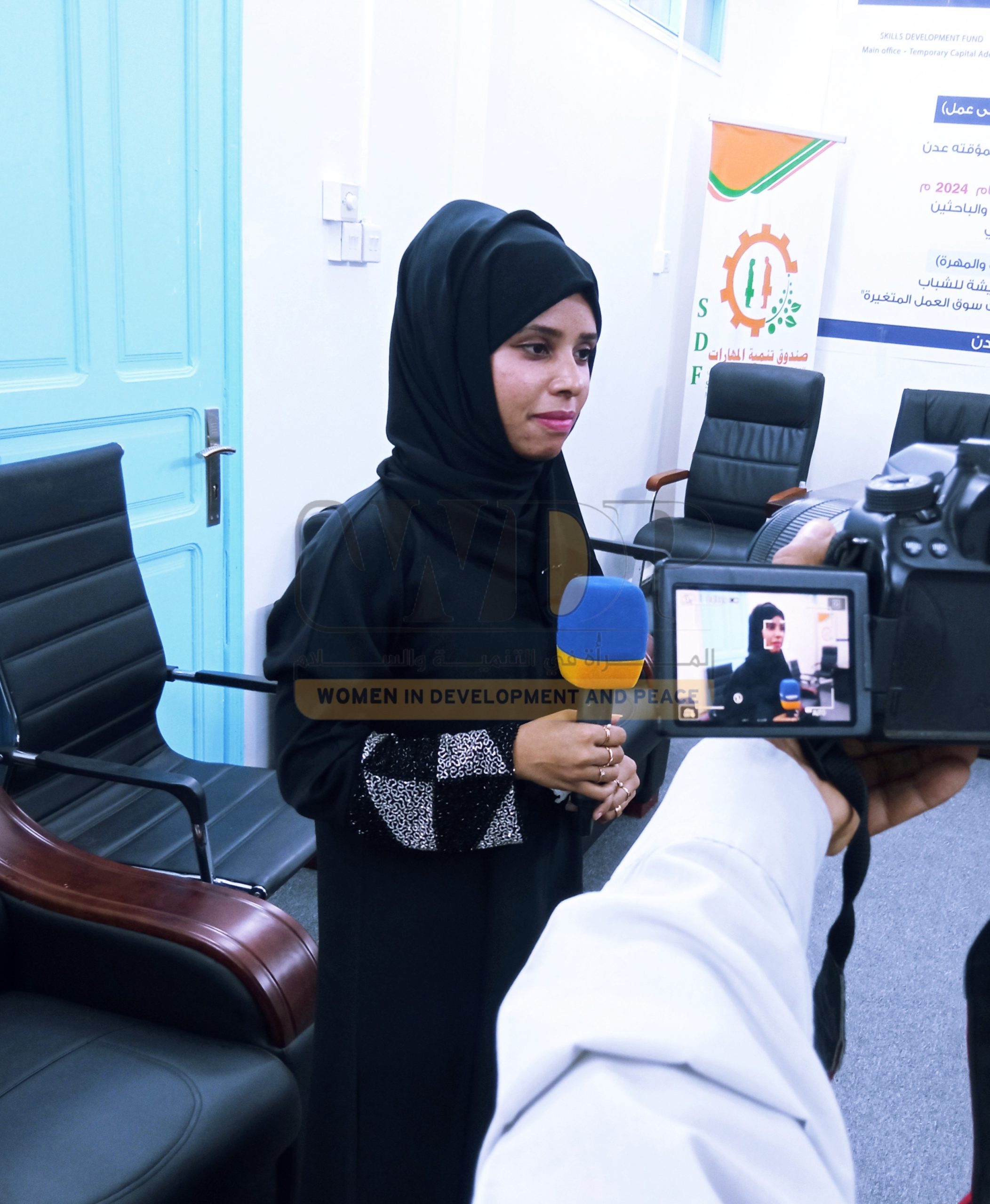Women in Development and Peace – Alia Mohammed
Modern media refers to the means that rely on modern technologies in the communication process. It emerged as a widespread term in the late 20th century to become a necessary need in shaping people’s opinions, attitudes, and interactions in today’s society.
The importance of modern media lies in its interactivity and the absence of restrictions on content imposed by geographical and political boundaries. These means include blogs, podcasts, social media platforms, online journalism, and new interactive media platforms.
In Yemen, modern media has witnessed a significant development in the media scene, becoming a platform for influential Yemeni women in the media field, increasing their significant participation due to technological advancements, expanded internet usage, and social media platforms. Our report sheds light on the presence of Yemeni media professionals in new and digital media and the roles they play.
Media professional Lamia Yusuf Al-Dhaifi, with a degree in journalism specializing in radio and television, emphasizes that technological advancements have contributed to the spread of modern media, providing Yemeni media professionals with the opportunity to express their opinions and ideas.
She adds, “Yemeni women have been able to establish themselves in modern media by covering various issues and presenting influential and creative content, contributing to the development of society and enhancing social interaction through covering diverse topics that enriched the Yemeni media scene.”
Al-Dhaifi sees modern media as an opportunity for Yemeni media professionals, especially in the current circumstances, where unemployment has spread and job opportunities are scarce. Modern media is far from the media policies of traditional means such as radio, television, and newspapers, and it is easily accessible and usable by all segments of society, regardless of age and social status.
She points out that presenting content in modern media requires a great deal of effort, both intellectually and practically, to deliver meaningful, engaging, and innovative content that is not repetitive. In addition, the quality of the tools used in filming and recording, which are currently expensive and difficult to obtain for some, is essential.
She explained that modern media reaches all segments of society, regardless of their cultures and environments. However, the specificity of Yemeni society poses a challenge in accepting female media figures on social media platforms, leading to criticism of their appearance, speech, and performance.
In a related context, TV and radio host Iman Muhsin highlighted that the traditional media’s policies are the real obstacle to the freedom of female media professionals in presenting content, due to restrictions on topics and their treatment. As a result, most of them have turned to modern media, characterized by freedom and lack of censorship except by the users themselves.
She stated, “Yemeni female media professionals play a vital and effective role in presenting a different perspective on various issues, striving to voice women’s concerns and bring positive change in prevailing societal patterns.”
She added, “The presence of female media professionals in modern media is evidence that media work is important and that women, with their real success and diverse roles, can be strong competitors to men in all media fields.”
Advantages of Modern media
Modern media is characterized by providing opportunities for all segments of society to use and benefit from it without the control of media leaders. The concept of modern media encompasses several terms, including digital media, networked media, social media, citizen journalism, and social networking sites.
These media are interactive, collaborative, and involve two-way communication, unlike traditional media, which execute one-way communication. Many studies have indicated that modern media allows individuals with simple tools to present diverse and flexible information in an unrestricted communication environment. It is worth mentioning that new communication media utilize various formats such as images, videos, graphics, sounds, and texts.
Working in modern media requires some tools, the most prominent of which are: a computer or a smartphone, as well as subscribing to one of the social media platforms (Facebook, Twitter, Instagram, YouTube, blogs, and others) that have a significant presence in the virtual world.
Success Despite Difficulties
Yemeni media professionals remain a fundamental element in the modern media industry, and despite the challenges they face, they have managed to represent a successful model. Some have reached a wide audience that has been influenced by the content they provide on their platforms.
Jihan Abdulhakim is one of the media professionals who use modern media to address various topics. She believes, “the presence of women in modern media is a crucial necessity for conveying different perspectives, especially in issues related to women, which can be expanded more than men; this enhances balance, diversity, achieves gender equality, and empowers women in society.” Regarding the main difficulties facing Yemeni female media professionals in modern media, she says, “Our society still needs to increase awareness of the reality of women’s presence and their importance and role in modern media; as they are a means to convey all voices, they are like a mini-society addressing several problems in reality. In addition, some women view social media sites as entertainment only and deal with them on this basis. Moreover, many families prohibit their daughters from being present on social media, so the girl resorts to creating a few accounts with minimal interaction, fearing her family’s knowledge. This reduces her interaction and may confine it to a specific number of known friends to remain in a safe zone.”
On the other hand, Jihan explained that Yemeni media professionals in our society face difficulty due to gender biases and discrimination based on gender. Society tends to accept the presence of men in modern media more than women due to societal views, customs, and traditions that consider women’s appearance on these platforms as a social flaw, which affects their performance and excellence in this field.
Many Yemeni female media professionals are subjected to direct and public cyberbullying and harassment on modern media platforms, with their content often disregarded as insignificant. This mistreatment extends to private channels such as messenger apps and chat icons in other applications and can even escalate to real-life harm due to their social media presence and the perception of their availability.
These practices inflict psychological harm, hindering their future participation and engagement with the online community, making their involvement increasingly challenging.
In conclusion, the presence of Yemeni women in modern media remains crucial. Efforts must be dedicated to enhancing their role, raising awareness to change prevailing cultural norms, achieving equality, promoting women’s leadership in media institutions, supporting female journalists, and encouraging their engagement through educational and training opportunities for skill development and empowerment.

